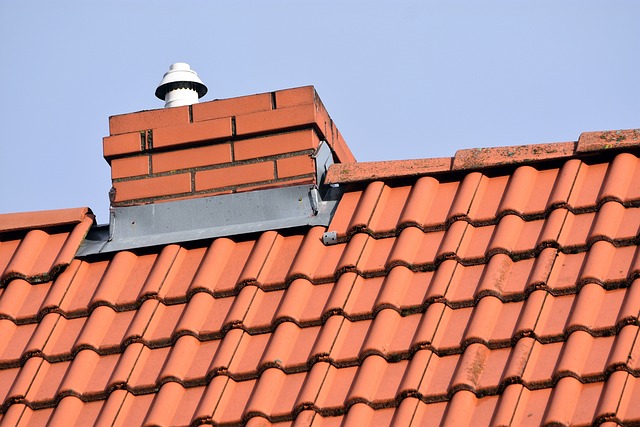Roof ventilation is critical for energy efficiency and maintaining a comfortable indoor climate, especially in Austin's distinctive weather pattern of intense heat and gentle cold. Roofer Austin stands out as a knowledgeable resource for designing and implementing efficient roof ventilation systems tailored to the local architecture and climate demands. These systems work by allowing heat and moisture to escape during warm months and preventing cold air from accumulating in the attic during winter, thus avoiding structural issues like frost and ice dams. Roofer Austin's expertise extends beyond installation to providing guidance on insulation and other energy-efficient practices that enhance overall system effectiveness. By adopting these strategies, buildings can achieve greater comfort, lower energy consumption, and reduced utility costs while promoting sustainability. The company emphasizes a comprehensive approach that combines ventilation with energy efficiency for optimal performance in various environments. For homeowners, regular inspection of roof vents and addressing signs of moisture or condensation is essential to maintain proper ventilation, which can lead to significant reductions in cooling costs and enhance comfort year-round. Homeowners are advised to consult Roofer Austin for professional guidance on selecting the right type of vents, such as ridge vents or soffit vents, to ensure maximum airflow and temperature regulation in the attic, thereby reducing the strain on HVAC systems and lowering energy bills. Real-world case studies from Austin demonstrate tangible benefits, including reduced cooling costs, improved indoor climate stability, and mitigation of the urban heat island effect, highlighting the value of investing in professional roof ventilation services for sustainable living and cost savings in Austin's competitive housing market.
roof ventilation plays a pivotal role in maintaining energy efficiency, a critical aspect for sustainable living. In the heart of Austin, Texas, the unique climate demands attention to this often-overlooked element. This article delves into the essence of effective roof ventilation, highlighting the expertise of professional roofers in Austin and the key components that enhance building performance. We’ll explore practical steps to evaluate and bolster your roof’s ventilation system, tailored for Austin’s climate. Through case studies, witness how homes across the city have harnessed this simple yet powerful strategy to slash energy costs and boost comfort. To ensure a well-ventilated roof, trust the seasoned Roofer Austin professionals who understand the region’s challenges and solutions in energy-efficient design.
- Understanding the Importance of Roof Ventilation in Energy Efficiency
- The Role of Professional Roofers in Austin for Optimal Ventilation Systems
- Key Components of Effective Roof Ventilation and Their Benefits
- How to Assess and Improve Your Roof's Ventilation in Austin Climate
- Case Studies: Energy Savings and Comfort Achieved Through Proper Roof Ventilation in Austin Homes
Understanding the Importance of Roof Ventilation in Energy Efficiency

Proper roof ventilation plays a pivotal role in maintaining energy efficiency within residential and commercial structures. In regions with extreme weather conditions, where temperatures can soar or plummet, the right balance of airflow is crucial to regulate the indoor climate. Effective ventilation systems work by allowing heat and moisture to escape from the living space during warm months, thereby reducing the reliance on air conditioning. Conversely, in colder periods, they prevent the buildup of cold air within the attic or roof space, which can otherwise lead to frost and ice dams that compromise a building’s integrity.
To ensure optimal performance, homeowners and businesses should consider partnering with experienced professionals like those at Roofer Austin. These experts are adept at identifying the best ventilation solutions tailored to each property’s unique architectural design and climate challenges. Roofer Austin’s team not only installs high-quality roof vents but also provides advice on insulation and other energy-efficient practices that complement the ventilation system. By prioritizing these measures, buildings in Austin and beyond can maintain a comfortable environment while reducing energy consumption and costs. This synergy between proper ventilation and energy efficiency is not just about comfort; it’s a strategic approach to sustainability and cost savings.
The Role of Professional Roofers in Austin for Optimal Ventilation Systems

In Austin, where the climate oscillates between sweltering summers and mild winters, proper roof ventilation is a cornerstone of energy efficiency for residential and commercial properties alike. Professional roofers in Austin play a pivotal role in designing and installing these systems, ensuring that buildings maintain optimal temperatures year-round. Their expertise extends beyond the physical installation; these experts assess each property’s unique architectural design, local climate conditions, and the specific needs of the occupants to tailor a ventilation solution that maximizes thermal performance and minimizes energy consumption. Roofers in Austin, like those from Roofer Austin, understand the importance of proper insulation and airflow to prevent heat buildup during the hot Texas days, which can drive up cooling costs. Conversely, they also ensure that homes retain warmth during cold periods, reducing heating expenses. By partnering with a reputable roofer like those from Roofer Austin, property owners can rest assured that their roof ventilation system is not only compliant with local building codes but also customized for maximum efficiency and longevity of the building’s structure. The knowledge and hands-on experience that professional roofers bring to the table are indispensable in achieving the balance between indoor comfort and energy savings, making them an integral part of any renovation or new construction project in Austin’s dynamic housing market.
Key Components of Effective Roof Ventilation and Their Benefits

Effective roof ventilation is a critical component for maintaining energy efficiency in residential and commercial buildings. A well-designed ventilation system facilitates the circulation of air, which helps to regulate temperature and humidity levels within a structure. This not only improves comfort for occupants but also reduces the strain on heating, ventilation, and air conditioning (HVAC) systems, leading to energy savings. The key components of such a system include intake vents, typically located at the soffit or eave line, and exhaust vents, often found at or near the peak of the roof. In Austin’s climate, where temperatures can soar, these vents work in tandem to ensure proper airflow. A quality roofer in Austin, like those who specialize in roofing solutions, can assess your property and recommend the most suitable ventilation strategy. For instance, ridge vents or turbines can be installed as passive exhaust systems that operate without electricity. Similarly, soffit vents or static vents serve as effective intake pathways for cool air. By balancing these two types of vents, a roof can maintain optimal temperature and humidity levels throughout the year. This balance not only enhances occupant comfort but also extends the lifespan of the roof by preventing moisture-related issues such as mold growth and roof deck damage. Incorporating reflective materials or energy-efficient shingles in conjunction with a proper ventilation system can further increase the energy efficiency of a building, making it a smart investment for any property owner in Austin.
How to Assess and Improve Your Roof's Ventilation in Austin Climate

In the unique climate of Austin, Texas, ensuring your roof is adequately ventilated is crucial for maintaining energy efficiency throughout the year. Excessive heat and humidity can cause significant issues if proper ventilation is not in place. To assess your roof’s current ventilation situation, start by examining its existing vents. Look for signs of moisture or condensation within the living space, as these can indicate poor ventilation. In Austin, where the summers are hot and the winters are mild, a properly insulated and ventilated attic can greatly reduce cooling costs during the warmer months. A trusted local roofer in Austin, with expertise in climate-specific conditions, can help you evaluate your roof’s ventilation system. They can identify where additional vents may be required or whether your current setup is adequate.
Once you have assessed the need for improvements, consider the types of ventilation that will best suit your home. Ridge vents, soffit vents, and gable vents are all effective solutions for Austin’s climate. A roofer in Austin with a strong track record can assist you in selecting the right type and implementing it effectively. They will ensure that your new vents are appropriately spaced to allow for the best airflow, which is essential for energy efficiency. This balanced ventilation helps regulate the temperature in your attic, reducing the workload on your HVAC system and lowering your energy bills. By partnering with a reputable roofer Austin resident can trust, like those at [Your Roofing Company], you can rest assured that your home’s ventilation will be optimized for the optimal performance in Austin’s climate.
Case Studies: Energy Savings and Comfort Achieved Through Proper Roof Ventilation in Austin Homes

In recent years, homeowners in Austin have recognized the significance of proper roof ventilation for both energy efficiency and enhanced comfort within their residences. A series of case studies from local roofers like those in Austin has demonstrated substantial energy savings and improved living conditions. Home A, a single-family dwelling, witnessed a marked reduction in cooling costs after implementing a comprehensive roof ventilation system. The strategic placement of vents allowed for better airflow, which significantly reduced the heat island effect common in urban environments like Austin. This natural temperature regulation minimized the reliance on air conditioning systems during peak summer months, leading to a notable decrease in energy consumption.
Similarly, Home B, another Austin residence, experienced a transformation in inhabitant comfort. The introduction of ridge vents and soffit vents resulted in a more consistent indoor temperature, as the ventilation system effectively managed humidity and regulated the attic’s temperature. This stabilization of conditions within the home meant that residents could enjoy a comfortable living space with less fluctuation between seasons, further reinforcing the importance of proper roof ventilation. These case studies underscore the practical benefits achieved through the expertise of local roofers in Austin, highlighting their role in promoting sustainable and cost-effective living solutions. Homeowners who opt for professional services from experienced roofers in the city can expect to reap both financial and comfort-related rewards, making it a wise investment for any residential property.
In conclusion, the significance of roof ventilation in enhancing energy efficiency within residences cannot be overstated. Homeowners in Austin, particularly, benefit from the expertise of local roofers, who are adept at installing and maintaining systems that ensure optimal airflow. By understanding the key components that contribute to effective ventilation, such as ridge vents, soffit vents, and roof insulation, homeowners can significantly improve their homes’ energy efficiency and comfort. The case studies presented demonstrate tangible savings and heightened living conditions achievable through proper roof ventilation. For those in Austin seeking to optimize their home’s performance, partnering with experienced Roofer Austin professionals is a wise step towards sustainable living and cost-effective energy management.
